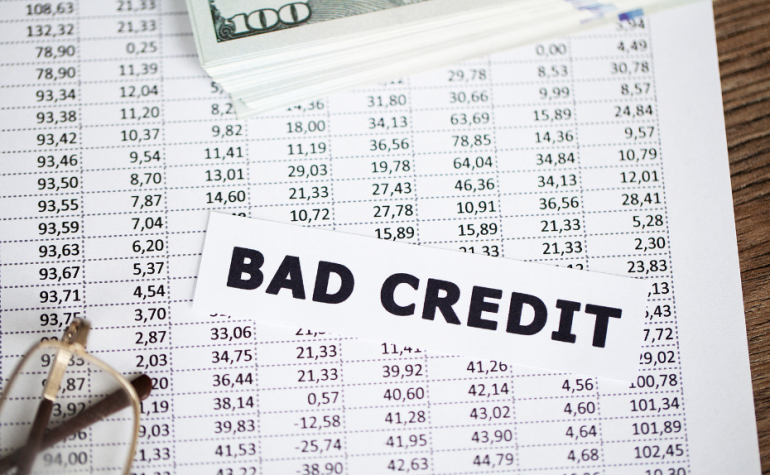
By max May 19, 2023
Having a merchant account is essential for any business that accepts credit or debit card payments. However, many new businesses struggle to obtain a merchant account due to bad credit. This can be a significant hurdle that limits a company’s ability to grow and process customer payments efficiently. Fortunately, there are alternative ways for businesses with credit issues to secure a merchant account. While these options may involve extra fees, requirements, or concessions, they allow entrepreneurs to start accepting credit card payments and grow their customer base.
A merchant account allows a business to accept payments from customers’ credit and debit cards. It includes a business bank account and a contract with a payment processor. By depositing the payments into the business account, a merchant account provides an efficient way to manage cash flow. For customers, being able to pay with credit or debit cards offers convenience and makes them more likely to make a purchase. Therefore, having a merchant account can significantly increase sales for many businesses. However, for startups and new companies, establishing the needed good credit score can be a challenge. This is where alternative paths to a merchant account become valuable options.
Apply With A Specialty Program

One of the most straightforward options for businesses with bad credit is to apply for a merchant account directly with a specialty provider. Many banks and payment processors now offer programs specifically designed to work with high-risk merchants that have a history of credit issues.
These specialty providers still evaluate an applicant’s creditworthiness to some extent. However, they take a more flexible approach and are willing to work with businesses that don’t meet all their traditional credit requirements. Some programs offer account approval in as little as 24 hours.
Specialty merchant accounts often come with extra requirements and terms compared to standard accounts. Fees tend to be higher, and providers may require a larger deposit or reserve fund. Applicants sometimes need to submit additional documentation proving the viability of their business model.
Reserve requirements are common, where the processor holds a portion of each transaction in a reserve fund for up to a year. The reserves help offset potential losses from chargebacks and refunds. Reserve amounts range from 10% to 30% of monthly transaction volume.
Despite the downsides, applying directly with a specialty provider can be the fastest and most straightforward option for many businesses with poor credit. If the basics of your business are sound and you can cover the extra costs, getting approved this way can help you start accepting card payments quickly.
Some reputable providers of specialty merchant accounts include:
- Elavon – Offers an account specifically for startups and growing businesses
- Vantiv – Program geared towards businesses with less than two years of operations
- First Data – High-risk program that provides funding the same day as approval
Look for providers that are transparent about fees, reserves, and other requirements upfront. Compare offers carefully to find the best overall terms for your specific needs.
Find A Sponsor
Another potential option for businesses with bad credit is to find a sponsor for their merchant account application. This involves partnering with an established business that has a good credit score and payment history. The sponsor then co-signs or vouches for the applicant’s business during the underwriting process.
The sponsoring business essentially guarantees the account to the bank or payment processor. This provides reassurance since the sponsor has a track record of timely payments and financial responsibility. The sponsor’s strong credit becomes a mitigating factor for the applicant’s poor credit history.
While not all payment processors accept co-branded or sponsored accounts, some do view them as a lower-risk alternative for marginal applicants. The sponsor is ultimately responsible for all charges and fees associated with the account.
However, sponsored accounts often involve the sponsor taking a percentage of the applicant’s profits, sometimes up to 20% initially. This revenue share can decrease over time as the sponsored business establishes a track record of healthy sales and low chargeback rates.
Still, giving up a portion of revenue may be worthwhile for a new business that otherwise cannot obtain a merchant account on its own. Finding a willing sponsor that you have a trusted relationship with is key.
Prospective Sponsors Include:
- Investors: Angel or VC funds that have already backed your business
- Partners: Companies you have strategic partnerships or supplier relationships with
- Franchisors: For franchised businesses
- Customers: Large businesses you already serve that believe in your viability
Approach potential sponsors by clearly outlining the benefits for them. These may include revenue opportunities, risk mitigation, and strengthening relationships. Have merchant account requirements and business projections ready to provide sponsors.
Secure A Loan Or Line Of Credit First

For some businesses with bad credit, the best course of action may be to secure a business loan or line of credit before applying for a merchant account. Taking out a loan can help in two major ways:
Improving your credit score – Obtaining a business loan and making timely payments over several months can boost your credit score. Lenders report performance to credit bureaus, so on-time loan payments show responsibility and improve your financial picture.
Establishing a positive payment history – Even if a loan does not significantly change your credit score in the short term, it can provide a recent, positive payment record for underwriters to evaluate. Showing that you can manage and repay business debt makes you a lower risk for merchant account providers.
Business loans for startups and businesses with weak credit do exist, though terms may not be favorable. Some options to consider include:
- Small business loans from online lenders – While interest rates tend to be higher, online loans are easy to apply for and quick to obtain.
- Short-term merchant cash advance loans – These funds can be used flexibly but come with hefty fees. Avoid relying on them long-term.
- Equipment loans – Secured by assets like business equipment, these loans offer somewhat better terms.
- Microloans under $50k from the SBA or community banks – Though not ideal for larger funding needs, these can report to credit bureaus.
Once you have made several on-time loan payments, reapply for a merchant account. Underwriters will likely view your new positive payment history favorably. You may still need to go through a specialty program initially, but the terms should be improved.
Over time, as your credit score increases and you develop a longer positive payment history, standard merchant accounts may become available.
Use An Independent Sales Organization (ISO)
For businesses with very poor credit or a troubled financial history, a strong option is to work with an independent sales organization or ISO. These are third-party companies that act as intermediaries between merchants and banks/processors.
ISOs help underwrite and submit merchant account applications on a business’s behalf. They can often get approval for applications that would otherwise be immediately declined. ISOs provide value by gaining approvals for higher-risk clients, even those with bad credit.
However, ISOs come with drawbacks. They typically charge high fees that can reach 8-12% of transaction volume. Some even require large reserve amounts of 15-30% for the first year. ISOs aim to make their profits mainly from fees rather than processing transactions.
Nonetheless, if you have exhausted other options and truly need a merchant account to survive, an ISO may be the only viable path. Just be sure to thoroughly research any ISO you consider and compare offers.
Look for ISO partners that:
- Are transparent about all fees upfront
- Charge reasonable rates below industry averages
- Maintain an A+ rating with the Better Business Bureau
- Have a track record of at least 5-10 years in business
Reputable ISOs can include:
- Merchant Rights – Specializes in high-risk businesses with bankruptcies or foreclosures
- Harbor Payments – Works with businesses with thin or no credit files
- Mercury Payments – Known for approving risky accounts others decline
- National Processing – Becomes the merchant of record to work around credit issues
While costly, going through an ISO may be your only option for obtaining the merchant account your business needs. Look at the total cost of the fees and reserves in the context of projected card volume and sales increases.
Improve Your Creditworthiness
For businesses that have been declined for a standard merchant account due to bad credit, the best long-term solution is usually to improve your business creditworthiness. Taking steps to boost your credit score and establish a positive payment history will make it much easier to qualify for better terms in the future.
Some actions to elevate your credit profile include:
- Pay all bills on time – Set automatic payments whenever possible and make bill payments a top priority. Even small, occasional late payments can significantly hurt your credit score.
- Correct any errors on your reports – Inaccurate information like late payments that weren’t your fault can lower your score. Dispute false items with credit bureaus.
- Apply again in 6-12 months – Once you’ve made headway improving your credit, reapply for a standard merchant account. Underwriters may now view your application more favorably.
- Continue responsible payment habits – Keep paying all bills on time to build a longer positive track record over time. This reduces risk perceptions.
- Register with commercial credit bureaus – Services like Dun & Bradstreet and Experian monitor business payment behavior. Enroll and make timely payments to build your profile.
- Apply for a business credit card – Use the card responsibly and pay balances in full each month. This can boost your business credit score.
Improving your business creditworthiness takes effort and discipline, but ultimately provides more options and lower costs. Focus on establishing good financial habits that become self-reinforcing over weeks, months, and years.
After a period of improvements, traditional merchant account providers may welcome your repeat application – especially if your credit score has risen by 50-100 points. You may now qualify for much better rates, lower reserves, and fewer restrictions.
Conclusion
In summary, there are a number of viable options for businesses with bad credit to get approved for a merchant account. These range from specialty providers to loans to independent sales organizations. Each option comes with tradeoffs, so evaluating your needs, budgets, and timelines is crucial.
Ultimately, companies with poor credit have two main paths: short-term workarounds that get them to accept payments now or long-term efforts to boost their creditworthiness. For most entrepreneurs, a combination of the two is likely required – an initial workaround to get started, then a focus on improvements to qualify for better programs over time.
The first step is simply to begin accepting credit card payments through whatever means necessary. This allows your business to grow, serve more customers, and manage cash flow more efficiently.
However, don’t lose sight of the importance of establishing a strong credit and payment history for your business. Making healthy financial decisions and paying all bills on time, every month will slowly but surely translate into better approvals, rates, and terms from banks, lenders, and processors. With discipline and consistency, improving your creditworthiness is well within reach.
So start by getting approved however you can, then set responsible financial goals to qualify for traditional merchant accounts in the future. With a plan and persistence, businesses with poor credit can overcome initial obstacles to build healthy, sustainable finances over the long run.
